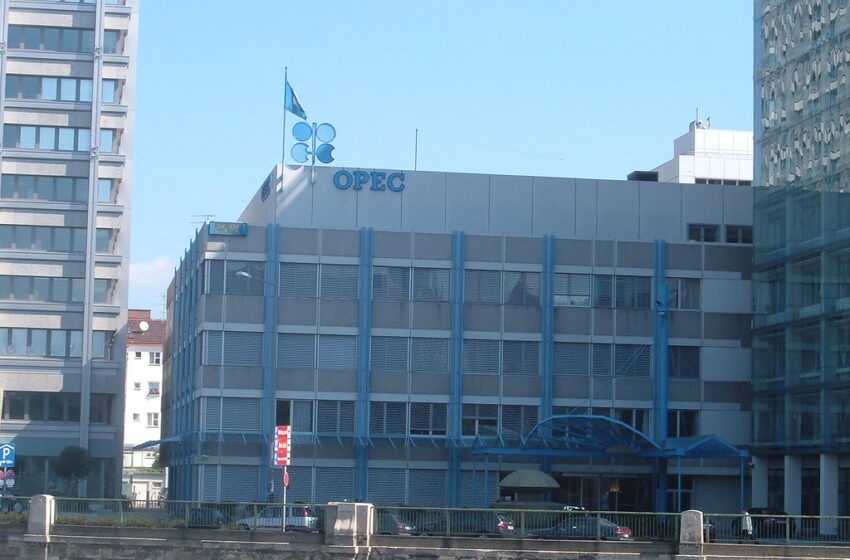
IMAGE COURTESY: Britannica
Cap on Crude Oil Output to Continue
“Saudi Arabia will extend its voluntary cut of 500,000 barrels per day (BPD) until the end of December 2024, in coordination with some countries participating in the OPEC+ agreement.”
In its efforts to maintain price stability due to uncertain economic conditions, the Vienna-headquartered Organisation of Petroleum Exporting Countries (OPEC) and its allies have agreed not to increase oil production till their next meeting in June this year.
The decision was taken by OPEC at its 53rd Joint Ministerial Monitoring Committee (JMMC) meeting, which reviewed the crude oil production data for January and February 2024, and noted high conformity among participating OPEC and non-OPEC countries (ONOMM) to the Declaration of Cooperation (DoC).
With tensions rising between Iran and Israel when Iran launched more than 100 drone and rocket attacks on Israel in first fortnight of April, market watchers believe the oil prices would shoot up distressing the world economies, particularly energy-hungry nations such as the UK, China and India, further.
In fact, Saudi Arabia’s Energy Minister Prince Abdulaziz bin Salman Al-Saud, last year made it clear that the Kingdom will extend its voluntary cut of 500,000 barrels per day (BPD) until the end of December 2024, in coordination with some countries participating in the OPEC+ agreement.
The JMMC also welcomed pledges from Iraq and Kazakhstan to achieve full conformity and compensate for overproduction. Additionally, the committee welcomed the Russia’s announcement that its voluntary adjustments in the second quarter of 2024 will be based on production rather than exports.
“Participating countries with outstanding overproduced volumes between January and March 2024, will submit their detailed compensation plans to the OPEC Secretariat by 30 April 2024,” OPEC said.
The Committee further decided to continue monitoring the conformity of production adjustments decided upon at the 35th ONOMM held in June last year, along with additional voluntary production adjustments announced by some participating OPEC and non-OPEC countries in April 2023, and subsequent adjustments in November 2023 and February 2024.
It will closely assess market conditions and acknowledge the readiness of DoC countries to address market developments, prepared to take additional measures at any time, building on the strong cohesion between OPEC and participating non-OPEC oil-producing countries, OPEC said.

Oil Prices Likely to Soar
Deepest Cuts
Earlier, OPEC and its allies agreed to cut monthly oil output by 2 million barrels per day in November 2023, marking the deepest cut by OPEC+ since the 2020 COVID-19 pandemic. This decision was made despite pressure from the US and others countries which demanded more output.
This development followed a drop in Brent crude prices to as low as $84 per barrel in September, having peaked at $125 per barrel back in June. In the previous month, OPEC had agreed to cut oil output by 100,000 barrels per day.
OPEC+ supply fell approximately 3.6 million barrels per day short of its output target in August, a shortfall attributed to Western sanctions on Russia, Venezuela, and Iran, along with output issues in Nigeria and Angola.
In April 2023, OPEC announced a ‘voluntary reduction’ of 1.66 million barrels per day in its crude oil production. These cuts were scheduled to commence in May and extend through the end of the year, according to an official from the Saudi Ministry of Energy. This reduction was in addition to cuts announced by OPEC+ in October 2022.
Furthermore, in June of the same year, OPEC announced an extension of cuts until 2024, noting its commitment to the stability of the oil market and its readiness to provide long-term guidance.
Last November, OPEC and its allies agreed to cut monthly oil output by an additional 1 million barrels per day starting in 2024. Moreover, in March, the oil cartel announced an extension of additional voluntary cuts of 2.2 million barrels per day for the second quarter of 2024.
The JMMC pledged to continue closely assessing market conditions, noting the willingness of DoC countries to address market developments and stand ready to take additional measures at any time. It also expressed full recognition and support the efforts Saudi Arabia, which aimed at supporting oil market stability, appreciating its additional voluntary cut of 1 million barrels per day extended until the end of December 2023.
Production Cuts in Q2-2024
Several OPEC+ countries have announced extensions of additional voluntary cuts of 2.2 million barrels per day for the second quarter of 2024. These cuts, aimed at supporting oil market stability and balance, are calculated from the 2024 required production level as per the 35th OPEC Ministerial Meeting held in June last year.
These cuts are in addition to voluntary cuts previously announced in April 2023 and extended until the end of 2024. They have been announced by Saudi Arabia (1 million barrels per day), Iraq (220,000 barrels per day), the UAE (163,000 barrels per day), Kuwait (135,000 barrels per day), Kazakhstan (82,000 barrels per day), Algeria (51,000 barrels per day), and Oman (42,000 barrels per day) for the second quarter of 2024. They will gradually be returned, subject to market conditions, to support market stability.
Additionally, the Russian Federation announced a voluntary production cut of 471,000 barrels per day for Q2 of 2024, which will be from crude oil production and exports. This includes 350,000 barrels per day from production and 121,000 barrels per day from exports in April, 400,000 barrels per day from production and 71,000 barrels per day from exports in May, and 471,000 barrels per day entirely from production in June.
Russia’s voluntary production cut is in addition to reduce the oil production of 500,000 barrels per day announced in April 2023, extended until the end of December 2024. Export cuts will be made from the average export levels of May and June 2023.










